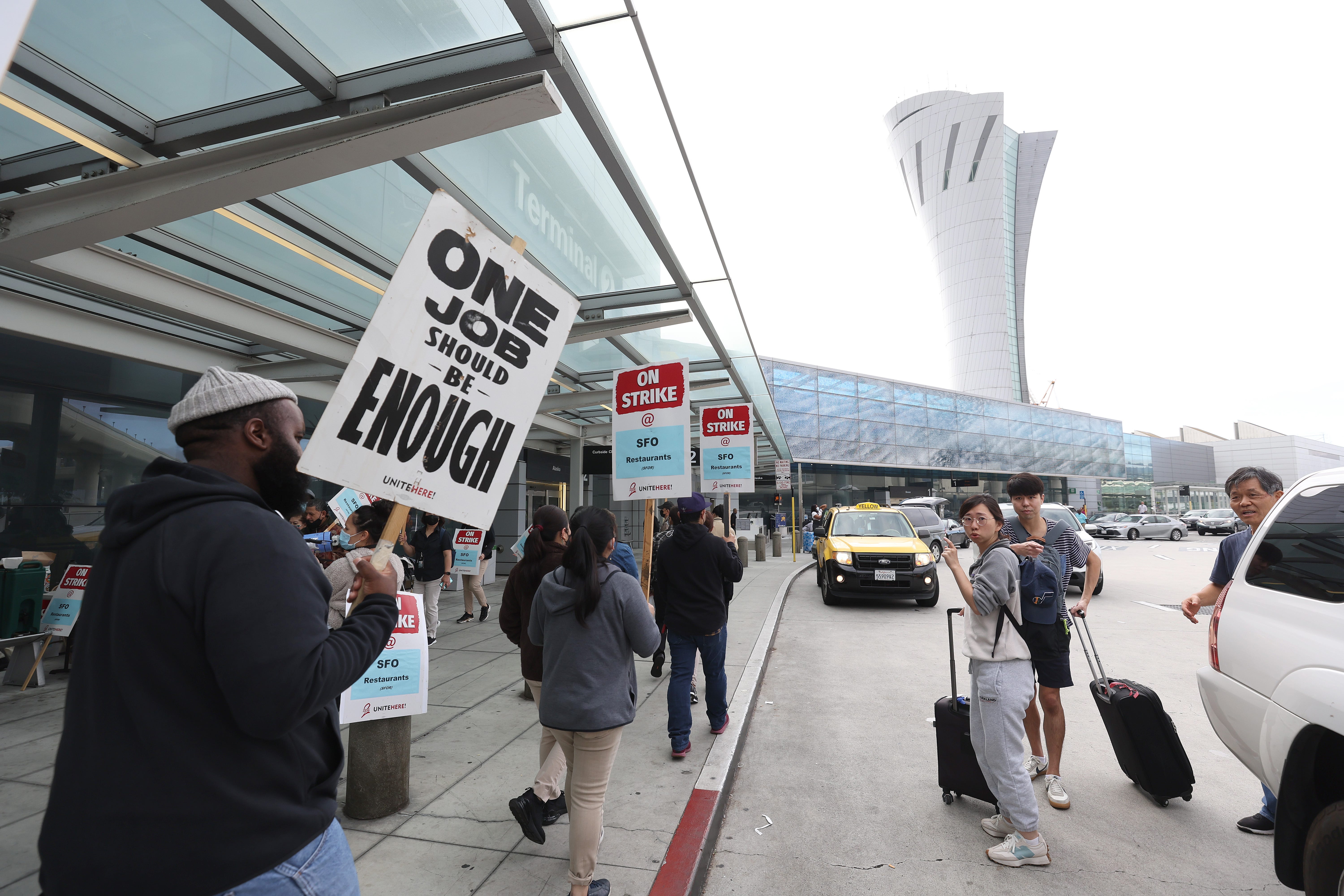
Service workers at San Francisco International Airport go on strike
Fast food workers at San Francisco International Airport are demanding better wages. The strike has caused many restaurants and shops to close.
Damien Henderson, USA TODAY
Over the past decade or so, low-wage occupations like fast-food workers and bartenders have ever so slightly closed the gap with higher-earning roles, such as lawyers and architects, a new analysis shows.
Airline pilots, dancers and software developers reaped the biggest average pay increases, in percentage terms, from 2010 through May 2021, according to an analysis of Labor Department data by Clarify Capital, a small business lender.
Dentists, actors and architects notched the smallest gains.
Overall, the average yearly salary in the U.S. increased 31.2% over the decade, the study shows, but after adjusting for inflation, average pay fell by 4.5%. Only about one-fifth of occupations have kept pace with consumer price increases during the 10-year period.
“The job market hasn’t kept up with inflation,” says Nishank Khanna, chief marketing officer of Clarify Capital.
Workforce exodus?: Millions of men are leaving the workforce. Here’s the lasting impact that has on the economy.
Not so diverse: Corporate diversity database: A USA TODAY investigative series inside the nation’s most powerful companies
Even in the past year or two, as the nation emerged from the pandemic, average wages grew by more than 5% annually but until recently they lagged inflation, which peaked at 9.1% last June.
The five occupations with the sharpest pay increases over the decade:
Airline pilot
Average pay increase: 71.9%
Average inflation-adjusted increase: 25.1%
Average salary: $198,190
There was a shortage of pilots after many retired or took buyouts early in the pandemic, Khanna says.
Dancer
Average pay increase: 48%
Average inflation-adjusted increase: 7.7%
Average salary: $50,939
Software developer
Average pay increase: 46.4%
Average salary: $120,990
Average inflation-adjusted increase: 6.5%
Demand for software developers has exploded along with sales of digital products and services, especially since COVID.
How do rich people avoid taxes? Wealthy Americans skirt $160 billion a year in tax payment
Farmer
Average pay increase: 44.3%
Average inflation-adjusted increase: 5%
Average salary: $31,795
Farms have grappled with worker shortages because of tougher immigration laws and declining interest in the field.
Bartender
Average pay increase: 42.4%
Average inflation-adjusted increase: 5%
Average salary: $31,795
Restaurants and bars have struggled to hire bartenders, servers and other workers because many left the industry during the health crisis. Fast-food workers and servers are close behind bartenders, with average pay gains of 40% and 39.5%, respectively. Khanna also partly credits the Fight for $15 campaign, a group of fast-food workers and union officials that staged walkouts for higher pay.
Recall alert: 2 million Cosori air fryers sold at Target and Amazon recalled after fires, injuries reported
Occupations with the most modest pay increases:
Dentist
Average pay increase: 5.3%
Average inflation-adjusted change: -23.4%
Average salary: $167,160
This is surprising since typical dental school costs have increased from $131,736 to $210,625 over the decade, Khanna says.
Actor
Average pay increase: 10.1%
Average inflation-adjusted change: -19.9%
Average salary: $65,125
Architect
Average pay increase: 13.8%
Average inflation-adjusted change: -17.1%
Average salary: $89,400
The field was rocked by the mid-2000s housing crisis and Great Recession of 2007-09, as well as the early days of the pandemic.
Lawyer
Average pay increase: 14.4%
Average inflation-adjusted change: -16.8%
Average salary: $148,080
An oversupply of law school graduates in many areas left many struggling to find jobs while established lawyers faced pressure to hold down their fees, Khanna says. Technology advances also have made some legal services more efficient and less costly, he says.
Pharmacist
Average pay increase: 13.8%
Average inflation-adjusted change: -16.4%
Average salary: $125.690
A possible explanation is the spread of technology to fill prescriptions, reducing the need for pharmacists to spend time on routine tasks, such as counting pills and labeling bottles, Khanna says. That has met fewer job opportunities and less upward pressure on salaries, he says.

